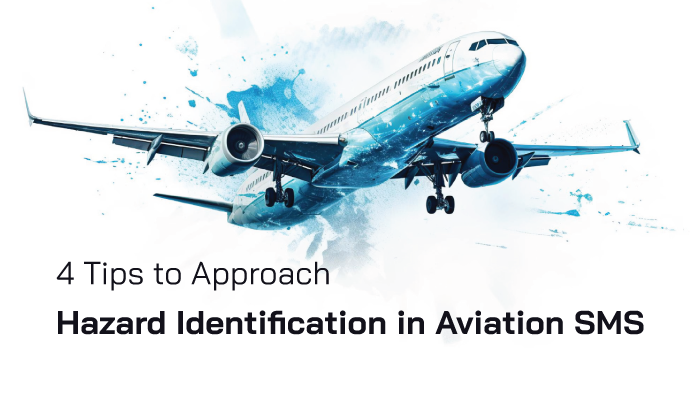AI-Powered Process Safety: A New Patent's Approach To Hazard Reduction

Table of Contents
Understanding the Limitations of Traditional Process Safety Methods
Traditional process safety approaches often rely heavily on reactive measures, responding to incidents after they occur. This reactive approach, while necessary for immediate response, is inherently limited in its ability to prevent accidents proactively.
Reactive vs. Proactive Safety
The limitations of a solely reactive approach are significant:
- High costs: Accidents lead to exorbitant costs encompassing repairs, lost production, and potential legal ramifications.
- Reputational damage: Accidents severely damage a company's reputation, impacting investor confidence and public perception.
- Regulatory penalties: Non-compliance with safety regulations results in hefty fines and potential operational shutdowns.
- Loss of productivity: Downtime following an incident significantly impacts productivity and profitability.
Traditional methods often fail to anticipate unforeseen events or identify subtle patterns that could indicate impending hazards. They lack the predictive capability to proactively mitigate risks before they escalate into accidents.
The Role of Human Error
Human error is a major contributing factor to industrial accidents. Fatigue, insufficient training, and misjudgment frequently lead to critical mistakes.
- Fatigue and stress: Long hours and demanding work environments can impair judgment and increase the likelihood of errors.
- Lack of training: Inadequate training on safety procedures and equipment operation contributes to preventable accidents.
- Misjudgment: Incorrect assessments of risks or failure to follow established procedures can have disastrous consequences.
AI-powered process safety systems can significantly mitigate human error by providing consistent, tireless monitoring and analysis, identifying anomalies and potential hazards that might be missed by human operators.
The New Patent: AI-Driven Predictive Hazard Analysis
This innovative patent introduces an AI-driven system for predictive hazard analysis, representing a paradigm shift in process safety.
Core Technology
The patent leverages advanced machine learning and deep learning algorithms to analyze vast amounts of data and predict potential hazards.
- Data sources: The AI is trained on a diverse range of data, including real-time sensor data from plant equipment, historical incident reports, and detailed process parameters.
- AI algorithms: Sophisticated algorithms, including anomaly detection and predictive modeling techniques, are employed to identify patterns and predict potential risks.
Real-time Monitoring and Alerting
The AI system continuously monitors plant operations, providing real-time insights into process behavior.
- Specific alerts: The system generates alerts for deviations from normal operating parameters, such as abnormal pressure fluctuations, unexpected temperature spikes, and unusual process behavior.
- Alert prioritization: Alerts are prioritized based on the severity of the potential risk, enabling operators to focus on the most critical issues.
This proactive approach allows for timely intervention, preventing minor issues from escalating into major incidents.
Integration with Existing Safety Systems
The AI system is designed to seamlessly integrate with existing safety infrastructure, such as SCADA (Supervisory Control and Data Acquisition) and DCS (Distributed Control System), enhancing existing Process Safety Management (PSM) systems.
- Data exchange: Standard data exchange protocols ensure smooth data flow between the AI system and existing infrastructure.
- Combined benefits: The combination of AI and traditional safety systems provides a comprehensive and robust safety net, leveraging the strengths of both approaches.
Benefits and Applications of AI-Powered Process Safety
The implementation of AI-powered process safety offers numerous benefits across diverse industries.
Enhanced Safety and Risk Reduction
The proactive nature of the AI system leads to significant improvements in safety.
- Accident reduction: The frequency and severity of accidents are significantly reduced through early hazard detection and mitigation.
- Regulatory compliance: Improved safety performance enhances compliance with stringent industry regulations.
Cost Savings and Efficiency Gains
Beyond enhanced safety, AI-powered process safety also offers substantial cost savings.
- Reduced downtime: Proactive hazard detection minimizes downtime caused by accidents and unplanned maintenance.
- Optimized operations: The system allows for optimized resource allocation and improved operational efficiency.
Applications Across Industries
This technology has broad applicability across various sectors.
- Oil & Gas: Predictive maintenance and risk assessment in refineries and pipelines.
- Chemical Processing: Real-time monitoring and control of hazardous chemical processes.
- Manufacturing: Improved safety in complex manufacturing environments.
The adaptable nature of the AI system allows for customization to diverse industrial settings and processes, unlocking a wide range of future applications.
Conclusion
This new patent on AI-powered process safety offers a revolutionary approach to hazard reduction, significantly improving safety performance and operational efficiency. By leveraging the power of AI for proactive hazard identification and mitigation, industries can dramatically reduce the risk of accidents, minimize costs, and enhance overall safety. The integration with existing systems ensures a smooth transition and maximizes the benefits of this transformative technology. Explore the potential of AI-powered process safety for your organization. Learn more about this innovative technology and how it can revolutionize your approach to hazard reduction. Contact us today to discuss implementing AI-powered process safety solutions and improving your plant's overall safety performance. Embrace the future of process safety with AI.

Featured Posts
-
 Tanner Bibees First Pitch Homer Guardians Comeback Victory Over Yankees
Apr 30, 2025
Tanner Bibees First Pitch Homer Guardians Comeback Victory Over Yankees
Apr 30, 2025 -
 Vymershie Giganty Izuchenie Vorombe I Prichin Ikh Ischeznoveniya
Apr 30, 2025
Vymershie Giganty Izuchenie Vorombe I Prichin Ikh Ischeznoveniya
Apr 30, 2025 -
 Miedzynarodowy Dzien Zwierzat Bezdomnych 4 Kwietnia Pomoz Zwierzetom
Apr 30, 2025
Miedzynarodowy Dzien Zwierzat Bezdomnych 4 Kwietnia Pomoz Zwierzetom
Apr 30, 2025 -
 Hunters 32 Points Power Cavaliers To 10th Straight Win
Apr 30, 2025
Hunters 32 Points Power Cavaliers To 10th Straight Win
Apr 30, 2025 -
 Next Months 7 Key Carnival Cruise Line Updates
Apr 30, 2025
Next Months 7 Key Carnival Cruise Line Updates
Apr 30, 2025
